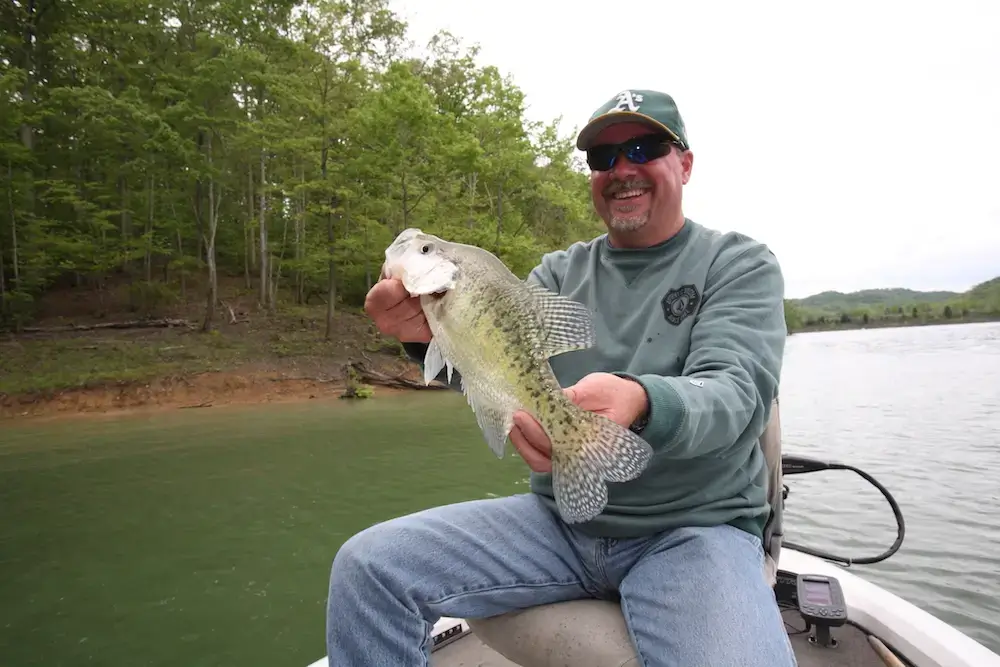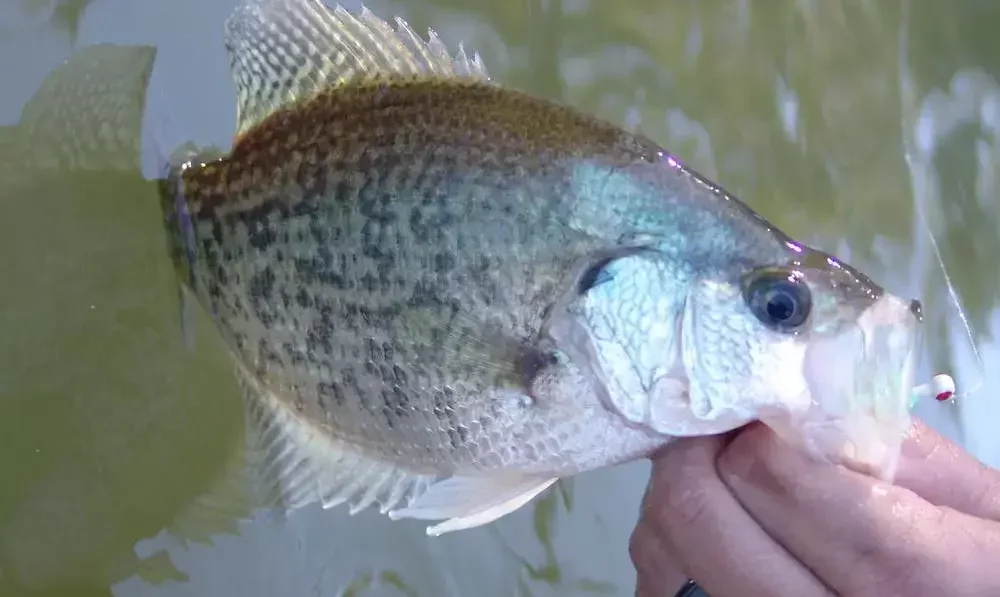If you’re looking to catch some crappie, then you need to know how to bait a crappie hole. This blog post will discuss the best techniques for baiting a crappie hole.
We’ll also provide some tips and tricks to help you increase your chances of success when fishing for these delicious fish.
So, whether you’re a beginner or an experienced angler, read on for everything you need to know about how to bait a crappie hole.
What is a Crappie Hole?
A crappie hole is a spot in the water where you are likely to find crappie. These spots can be from shallow bays and coves to deep channels and drop-offs.
Crappie likes to hang out around covers, such as logs, stumps, rocks, or weed patches. They will also suspend in open water at various depths, depending on the day and how active they are.
The best way to find a crappie hole is to use your electronics. When you locate a good spot, mark it with a buoy or some other marker so you can easily find it again.
If you’re fishing from shore, try to find a spot where you can cast your lure into the deepest part of the hole.
Now that you know what a crappie hole is let’s take a look at how to bait it.
How to Bait a Crappie Hole: Tips and Tricks

- Use the live bait. The best bait for catching crappie is live bait, such as minnows, worms, or crickets.
- Use a jighead. When using live bait, use a jighead to help you get your bait down to the fish. A jighead is a type of fishing lure that has a lead head and a hook attached to it.
- Match the bait to the depth of the hole. In deeper water, use a heavier jighead and in shallow water, use a lighter jighead.
- Use a bobber. If you’re fishing in open water, suspending your bait at the desired depth can be tricky.
A bobber will help you do this. Just place the bobber on your line a few inches above the bait, and it will float up or down until it hits the water’s surface, allowing you to adjust your bait’s depth easily.
- Use live bait rigs. If you’re using live bait, use a live bait rig to help keep your bait secure. A live bait rig is a type of fishing tackle that consists of a lead head, a swivel, and two hooks.
One hook is attached to the end of your line, while the other hook is placed through the bait. This setup will help you keep your bait in place while you’re casting or trolling.
- Use a jigging spoon. If you’re having trouble getting your bait down to the fish, try using a jigging spoon. A jigging spoon is a type of fishing lure that is designed to be used in deep water.
It has a weighted head and a thin, curved blade that wobbles as it falls through the water. This lure can effectively target crappie, bass, and other predatory fish.
- Try different lures. If you’re not having any luck using live bait, try using artificial lures. There are many different types of lures to choose from, so experiment until you find one that the fish are biting on.
- Use a soft plastic lure. Soft plastic lures are a great choice for targeting crappie. They come in many different shapes and sizes, so you can find one that matches the size of the fish you’re trying to catch.
- Use a jigging bait. If you’re fishing for larger crappie, try using a jigging bait. A jigging bait is a type of fishing lure that is designed to be used in deep water.
- It has a weighted head and a thin, curved blade that wobbles as it falls through the water. This lure can be effective when targeting crappie, bass, and other predatory fish.
- Use a topwater bait. If you’re looking for an exciting way to catch crappie, try using topwater bait. A topwater bait is a type of fishing lure that is designed to be used on the surface of the water.
- It has a cupped face and a thin, curved blade that causes it to “walk” or “skitter” across the surface of the water as you reel it in. This lure is most effective when targeting bass and other predatory fish.
What Is the Best Month to Fish for Crappie?
Crappie can be caught all year long, but the best months to catch them are January through April. This is when they are most active and feeding.
In the fall, crappie will move into deeper water, which is more relaxed. They can still be caught during this time, but you will need to use different techniques than what you would use in the spring.
Choose a Spot on the Lake with a Deep Hole

This can be easy to spot if the water is murky or you’re using a depth finder.
– Look for an area with some structure in the form of fallen trees, stumps, rocks, or artificial brush piles. Crappie likes to hang around these structures, especially in winter when they are lethargic and not moving around as much.
– Use a jig or minnow as bait. If you’re using a jig, make sure to use a light one so the crappie can feel it quickly. Start by casting your line close to the structure and slowly work it towards the middle of the hole.
– Be patient and wait for the fish to bite. Crappie are notorious for being fickle biters, so don’t get discouraged if it takes a while to catch one.
Use a Small Jig Tipped with a Minnow or Crappie Bait
If the crappie are active, you can also use a small spinnerbait. Cast your bait into the hole and slowly reel it in.
Be patient, and don’t try to set the hook too quickly; let the fish take the bait before setting the hook. You’ll know when you’ve got a bite because the line will start moving fast.
If you’re using live bait, make sure to keep an eye on your bobber; when the crappie takes the bait, the bobber will disappear. When you see the bobber go under, set the hook and reel in your catch.
Conclusion
Bait your crappie hole with something that will interest the fish. Minnows, jigs, and worms are all great options for bait.
Be sure to use enough bait so that the fish have plenty of food to choose from. You’ll be reeling in those crappies in no time.

